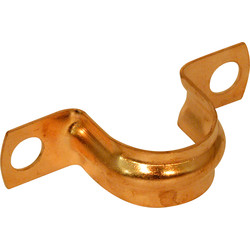- Joined
- Sep 27, 2016
- Messages
- 13,061
- Location
- UK
- Car
- Tesla Model S, Model 3 LR, Model X /// Previous: Jaguar XFR, Mercedes E320 CDI, C32 AMG, CLK 320
Hi all,
Currently having a property renovated and central heating is being installed, my plumber says chasing the 22mm pipe runs into the wall will result in a lot of brick needing to be chiselled out (all masonry walls) so I have decided to have the run surface.
My idea was to hide them under the skirting board, you seem to be able to buy skirting with a ‘rebate’ cut out, like below:

This is 30mm deep skirting, and the recess seems to be 60mm high x 24mm deep… will this be enough for a pair of 22mm pipes? Surely there will be clips used to hold them to the wall which may add ‘depth’ if that makes sense…
These are the only clips I’ve found which seem to add minimum depth, surely they’d still add more than 2mm though? Talon Nail in Clip 22mm
30mm deep seems to be the maximum size of skirting I can find, which already looks a bit odd so not sure I’d want a deeper size even I did find one.
Also not sure how to get a neat finish where the 22mms would go into a 15mm reducer/tee to go to/from rads?
Any ideas guys?
Cheers!
Currently having a property renovated and central heating is being installed, my plumber says chasing the 22mm pipe runs into the wall will result in a lot of brick needing to be chiselled out (all masonry walls) so I have decided to have the run surface.
My idea was to hide them under the skirting board, you seem to be able to buy skirting with a ‘rebate’ cut out, like below:

This is 30mm deep skirting, and the recess seems to be 60mm high x 24mm deep… will this be enough for a pair of 22mm pipes? Surely there will be clips used to hold them to the wall which may add ‘depth’ if that makes sense…
These are the only clips I’ve found which seem to add minimum depth, surely they’d still add more than 2mm though? Talon Nail in Clip 22mm
30mm deep seems to be the maximum size of skirting I can find, which already looks a bit odd so not sure I’d want a deeper size even I did find one.
Also not sure how to get a neat finish where the 22mms would go into a 15mm reducer/tee to go to/from rads?
Any ideas guys?
Cheers!

